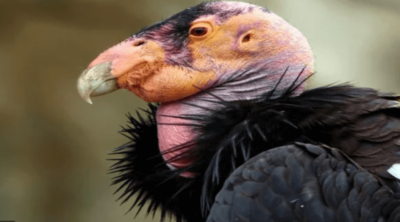
The hairy woodpecker is commonly seen, not only in the wilderness but also in our backyards. If you’re interested in more hairy woodpecker facts, then look no further. BirdEden will give you all related information, such as the size, characteristics, and diet of the hairy woodpecker, besides other interesting facts.
Did You Know?
Woodpeckers can tap on wood at a speed of 100 blows per minute!
Hairy woodpeckers are a commonly occurring species of woodpeckers found throughout the United States and some parts of Canada and Mexico. Like other woodpeckers, they mostly feed on insects that seek refuge within dead wood, by digging holes in it. This action of ‘pecking’ or tapping on wood stems is what gives all woodpeckers their name.
Hairy woodpeckers are common in almost all kinds of forest habitats. However, they also frequent urban surroundings in search of grains and suet commonly found in backyard feeders. Their scientific name is Picoides villosus.
They closely resemble another common species – the downy woodpecker. Despite having a similar color pattern, the fact is that, hairy woodpeckers are much larger and even weigh twice as much as their cousins. One chief difference is the length of their beaks; the downy’s beak is half the length of its head, while the hairy’s beak is as long as its head.
Another misunderstood part is the significance of the hairy woodpecker. Some people mistakenly think that these birds are pests, a reputation partly magnified by their tapping of wooden house sidings, which some may find annoying. In fact, there is rarely a bird so beneficial to mankind as the hairy woodpecker. This, and other facts about the hairy woodpecker, follows.
Appearance
▶ Color
Hairy woodpeckers are a mixture of black and white. They have thread-like white feathers in the middle of their black backs, which gives them the name ‘hairy’. The head has two white stripes. Males can be distinguished from females by a red patch at the back of their head. Their underparts are white to cream colored, while the beaks are grayish to black in color.
▶ Size and Shape
This is a powerful, medium-sized bird with a square head, and a straight beak ending with a chisel-like tip, which is as long as the head itself. Long tail feathers are used to support the bird while standing. The striped head along with an upright posture gives it a ‘soldierly’ look.
Length: 8 – 11 inches
Wingspan: 15 – 17 inches
Weight: 1.5 – 3 ounces
Diet
▶ It eats wood-boring beetles and their larvae, along with other insects like caterpillars, millipedes, cockroaches, ants, grasshoppers, beetles, flies, and also spiders. 75% of the hairy woodpecker diet comprises such insects.
▶ The vegetarian portion of their diet includes sunflower seeds, grains, nuts, peanut butter, and suet from bird feeders. They consume sap from tree-stems, and are also spotted tapping at sugarcane to lick the sweet juice oozing out.
▶ On rare occasions they eat wild fruits and berries.
▶ They are beneficial to humans as they kill insects that are destructive to orchards, forests, crops, and shade trees.
Habitat
They are found throughout North America. They mostly occur in forested areas, especially at sites of recent forest fires. They generally prefer deciduous and pine forests. As already mentioned, they are also found in suburban backyards near bird feeders.
Behavior
▶ The hairy woodpecker taps at the tree trunk, until it detects an insect tunnel because of the difference in resonance of sound. It then chisels away the wood and removes the insect using its long, barb-like tongue.
▶ Woodpeckers move up the tree in a movement called ‘hitching’, which involves moving in short leaps.
▶ Its call sounds like a shrill ‘peek’. It creates a sound like a rolling drum when tapping at wood.
▶ This drumming sound is used while locating a new nest site and also while announcing their territory. They also select ‘drumming posts’, tapping on which creates a louder sound. This may be an old telephone pole, hollow branch, or even a chimney.
▶ When fighting, it will raise its wings at a 45-degree angle and raise its head upward, while making shrill cries. This can sometimes be seen even during flight.
Reproduction
▶ Hairy woodpeckers are monogamous, i.e., they have one mate for a period of 4 years. Mating occurs three months before nesting. Both sexes attract each other by drumming. Sometimes, mating pairs can be seen flying around each other near trees.
▶ Their nest has a two-inch opening and is around 10 inches deep, and gets wider toward the end.
▶ Both the male and the female take turns to watch over their 4 eggs, in shifts.
▶ The chicks are naked, i.e., without feathers and have red patches on their foreheads. They leave the nests about 28 days after hatching, though their parents continue to feed them for sometime after this period.
Status and Threats
▶ The hairy woodpecker is regarded as a species of ‘Least Concern (LC)’ on the IUCN Red List of Endangered Animals.
▶ Between the years 1966 to 2010, their population increased by just 1%.
▶ The rapid fragmentation of forests and competition for nest sites from the European starling are the biggest threats facing this species.
Interesting Facts
✦ Hairy woodpeckers are shy creatures and are usually found in pairs.
✦ Unlike downy woodpeckers which forage for food on thin, fragile branches, hairy woodpeckers always frequent thick, strong branches and stems.
✦ They also follow pileated woodpeckers when they chisel holes in trees. When the pileated woodpecker leaves the hole, the hairy woodpecker arrives to check the hole for any insects that may have missed. In fact, the hairy woodpecker emerges even when it hears the sound of a pileated woodpecker tapping wood!
✦ The longest recorded lifespan of a captive hairy woodpecker was 15 years, 11 months, though its life is much lesser in the wild.
✦ Two of the smallest species of hairy woodpeckers―Picoides villosus piger and Picoides villosus maynardi―are found in the Bahamas.
✦ The vigorous tapping on tree trunks does not injure the woodpecker, because it has strong head and neck muscles. Tufts of feathers near the beak prevent particles from entering its nostrils.
As we have seen, hairy woodpeckers benefit mankind by protecting our crops and orchards from marauding insects. Though they are not at risk of extinction, hairy woodpeckers are hunted by hawks and eagles, some of which are endangered. This should be reason enough for us to protect this magnificent bird, because when we do this, we save the lives of countless of other creatures that depend on it for survival.







